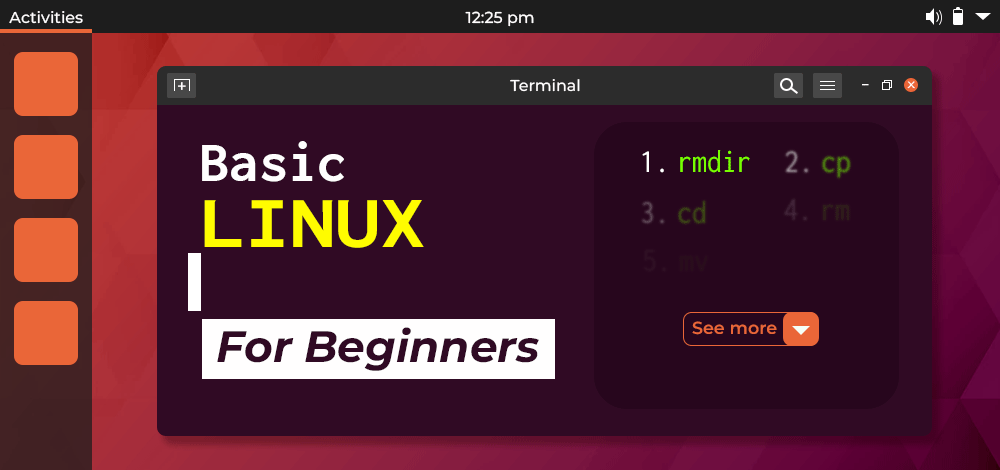Whether you’re a new Linux user or a beginner sysadmin, mastering the terminal is a must. This cheat sheet provides essential Linux commands for daily use — covering navigation, file manipulation, user management, permissions, networking, and more.
Save this post or bookmark it for quick reference!
📁 File and Directory Commands
ls # List directory contents
cd # Change directory
pwd # Show current directory path
mkdir # Create a new directory
rmdir # Remove an empty directory
touch # Create an empty file
cp # Copy files/directories
mv # Move or rename files/directories
rm # Delete files/directories
tree # Show directory structure (may need to install)
📝 Viewing and Editing Files
cat # View file content
less # View file one page at a time
head # Show first 10 lines
tail # Show last 10 lines
nano # Terminal text editor
vim # Advanced text editor
🔐 File Permissions and Ownership
chmod # Change file permissions
chown # Change file ownership
umask # Show default permission mask
ls -l # Long listing with permissions
Example:
chmod +x script.sh # Make a script executable
chown user:user file # Set owner and group
👥 User Management
whoami # Show current user
id # Show user/group IDs
adduser # Create a new user
passwd # Change user password
su # Switch user
sudo # Run as root
📦 Package Management
For Debian/Ubuntu:
sudo apt update
sudo apt install packagename
sudo apt remove packagename
sudo apt upgrade
For RHEL/CentOS:
sudo dnf install packagename
sudo yum install packagename
🌐 Networking Commands
ip a # Show IP addresses
ping example.com # Test connectivity
traceroute google.com # Show route to host
netstat -tuln # Show listening ports (use ss instead)
ss -tuln # Modern netstat replacement
curl example.com # HTTP requests
wget URL # Download file
📊 System Monitoring
top # Real-time process view
htop # Enhanced top (install with apt/dnf)
free -h # Show memory usage
df -h # Disk space usage
du -sh * # Folder sizes
uptime # System load
uname -a # Kernel info
🛠 Useful Shortcuts
Ctrl + C→ Stop commandCtrl + D→ Logout or end inputTab→ Auto-complete!!→ Run last commandhistory→ View command historyclear→ Clear terminal
🧠 Final Thoughts
This cheat sheet only scratches the surface of what’s possible with Linux. As you get more comfortable, try exploring shell scripting, cron jobs, and advanced tools like awk, sed, or tmux.
Don’t be afraid to explore, break, and learn — that’s the Linux way.

![Best Free CMS Platforms for Self-Hosted Blogs and Websites [2025 Edition]](https://ferisetyawan.com/wp-content/uploads/2025/08/Best-CMS-Platforms-150x150.png)

